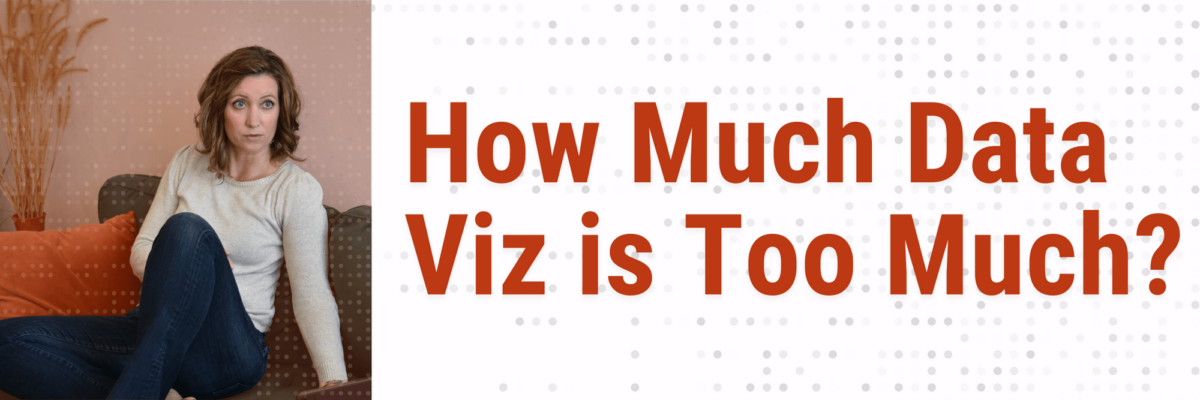“I’m concerned that we’re providing too much and it’s overwhelming for hospitals participating in our learning collaboratives. How much data viz is too much?”
Seems like a hard audience question, doesn’t it? You might not work with hospitals in a learning collaborative, but you still communicate data to audiences that can get overwhelmed. I’m sure you’ve seen that eye glaze from time to time. How would you answer this question?
How much is “too much?” Isn’t that entirely subjective?
The answer is actually deceptively simple.
Even one graph is too much data if it’s irrelevant.
Your audience can handle a LOT of data – IF the data is relevant.
So then the real work is just in figuring out what data will be relevant to your audience.
Relevance, in this scenario, means three things: The data answers their big burning questions. It carries a clear message. And it’s packaged in a way they can digest it.
The data answers their big burning questions.
Lucky people know exactly what’s weighing on their audience’s minds because their audience asks. The boss calls you into the meeting and wants to know “We said we were going to distribute 4,000 mosquito nets this quarter. How many did we distribute?”
Others of us aren’t so fortunate. We have to try to get inside our audience’s heads and hearts and figure out what’s hanging heavy there.
It’s usually going to be the stuff they could get fired or promoted over. The stuff that makes up their job description, their organizational mission, their strategic plans.
Here’s the thing:
Your audience likely only has 2, maybe 3 BIG burning questions.
They may have many more tiny follow ups. But I’m asking you (and they’re asking you) to prioritize.
See if you can answer each question with a graph or two. You’re safe from ever having too much data.
This is an example of what not to do, by way of a reader who emailed it to me in frustration. Their financial broker sends them this every week.
If you’re an average investor, meaning someone who has a company 401K and doesn’t really think about it too much, your big burning question for your financial broker is probably “How’s my money doing?”
Imagine getting this as a response:

😱
Run away and never look back, right?
I sure can’t see the answer to that question anywhere in here.
This much data to answer that pretty simple question actually makes it smell like this broker is hiding something.
Just answer the freakin question.
Need more help with this? I have example big burning questions here.
The data carries a clear message.
Let’s pretend that appropriately answering “How’s my money doing?” actually requires this much data. I should be able to walk away with a clear answer after a few moments with each graph.
There should be an obvious conclusion like “Really bad.” or “Time to donate to charity.”
It’s fine if the clear message is “Things are ambiguous.” At least you’re clear about the ambiguity.
The easiest way to create clear messaging? Strong titles for each graph.
The data is packaged in a way they can digest it.
The container you use to package your data can make or break this whole thing.
That monster financial dashboard probably does answer some questions that specific audiences will have. People with sophisticated finance knowledge who want to know about futures or margins or options (I don’t know, I’m just pulling out random stock market words I’ve heard) may be able to get something useful from this data.
So it’s not that the dashboard is total dumpster fire. It’s just the wrong data package for a general audience.
Are you in the same situation? I can help you get your data communications organized so that your graphs are never too much.
Use my free tool, the Data Communications Plan, to find the sweet spot where your data and your audience perfectly align.
Fill out your contact info and I’ll wing the Data Communications Plan to your inbox right now.
And I’ll send you a short tutorial on how to use the plan to reach each of your audiences, precisely the way they want to hear from you.
This tool will help you articulate your audiences, their questions, and the data packaging they really want.

